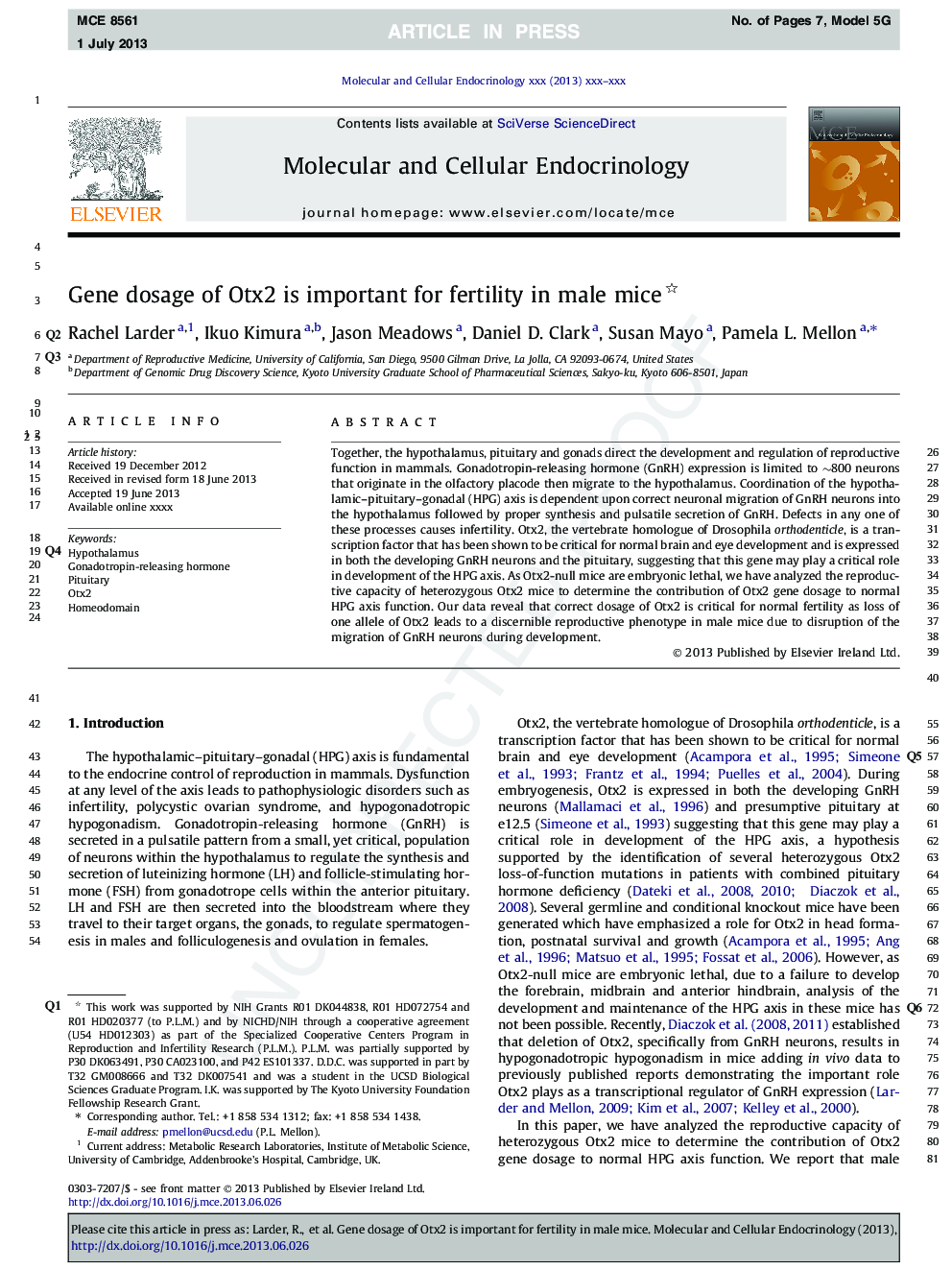| Article ID | Journal | Published Year | Pages | File Type |
|---|---|---|---|---|
| 8477323 | Molecular and Cellular Endocrinology | 2013 | 7 Pages |
Abstract
Together, the hypothalamus, pituitary and gonads direct the development and regulation of reproductive function in mammals. Gonadotropin-releasing hormone (GnRH) expression is limited to â¼800 neurons that originate in the olfactory placode then migrate to the hypothalamus. Coordination of the hypothalamic-pituitary-gonadal (HPG) axis is dependent upon correct neuronal migration of GnRH neurons into the hypothalamus followed by proper synthesis and pulsatile secretion of GnRH. Defects in any one of these processes causes infertility. Otx2, the vertebrate homologue of Drosophila orthodenticle, is a transcription factor that has been shown to be critical for normal brain and eye development and is expressed in both the developing GnRH neurons and the pituitary, suggesting that this gene may play a critical role in development of the HPG axis. As Otx2-null mice are embryonic lethal, we have analyzed the reproductive capacity of heterozygous Otx2 mice to determine the contribution of Otx2 gene dosage to normal HPG axis function. Our data reveal that correct dosage of Otx2 is critical for normal fertility as loss of one allele of Otx2 leads to a discernible reproductive phenotype in male mice due to disruption of the migration of GnRH neurons during development.
Related Topics
Life Sciences
Biochemistry, Genetics and Molecular Biology
Cell Biology
Authors
Rachel Larder, Ikuo Kimura, Jason Meadows, Daniel D. Clark, Susan Mayo, Pamela L. Mellon,
